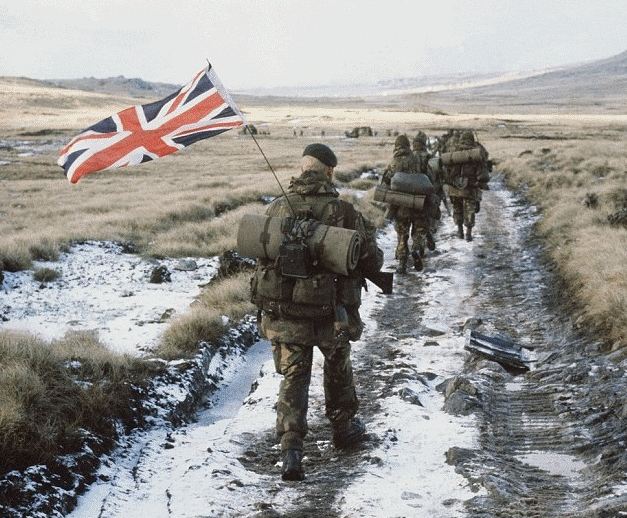Argentina attacked the British foreign territory of the Falkland Islands on April 2, 1982.
Argentina had claimed sovereignty over the islands for many years, and the country’s governing military dictatorship did not believe Britain would try to reclaim them by force.
Despite the enormous distance involved – the Falklands were 8,000 miles away in the South Atlantic – Britain, under Margaret Thatcher’s leadership, managed to assemble and dispatch a task force of warships and quickly refurbished merchant ships to the Falklands. Falklands War is considered one of the most famous political scandals of the 1980s.
The Occurrence of the Conflict
From an Argentine perspective, the conflict was initiated by restoring land rightfully theirs rather than by an invasion. The Falkland Islands have a complicated history. In 1764, France became the first country to establish a colony in East Falkland before the British claimed West Falkland. The fort of Port Egmont (Britain’s first colony in West Falkland) was taken by Spanish forces five years later.
A mercenary operating for the United Provinces of the River Plate, a precursor of Argentina, claimed ownership of the islands fifty years later. The British established their control in 1833, and the Argentine administration was asked to depart. From that point on, Britain held control of the Falklands, although the islands’ sovereignty remained a contentious question.
Argentina was controlled by a military dictatorship, known as a junta, in the early 1980s and was wracked by political turmoil and economic difficulties. Its leaders felt that recovering the Falkland Islands, which were approximately 300 miles off Argentina’s coast but over 8,000 miles from Britain’s, would appeal to nationalist feeling and rally a divided public behind the government.
The Sinking of Belgrano
On April 25, a commando team, SAS men, and members of the Special Boat Squadron retook South Georgia. The sinking of the Argentine cruiser ARA General Belgrano by British forces on May 2, however, is recognized as the conflict’s first significant action — and it proved to be one of the war’s most contentious acts. Even though the cruiser was located outside of the exclusion zone by the submarine HMS Conqueror, the decision was made to destroy it, resulting in the deaths of 323 Argentinians.
The Sun’s response to the sinking of General Belgrano, “Gotcha,” is one of the most famous or notorious front pages in the newspaper’s history.
The Casualty of the War and How it Ended
The Falklands War claimed the lives of 650 Argentinians and 253 British citizens. Hundreds more were injured on both sides, with the burns sustained by men like Simon Weston. He is a Welsh guardsman serving aboard the RFA Sir Galahad, who was left with burns covering 46 percent of his body after his ship was bombed, becoming some of the most iconic pictures of the battle. Around 11,000 Argentine captives were also taken by the British, who were all released after the fight.
By June 12, 1982, British soldiers had gained high ground surrounding Stanley’s city, encircled it, and blockaded its port. A series of brief clashes occurred, but the town was shut off. On June 14, Argentina surrendered. Later that year, British control was restored.
Margaret Thatcher’s participation
The conflict had considerable popular backing in the United Kingdom, partly because the early 1980s had been marked by bad news: economic crisis, industrial decline, and – allegedly – diminishing global importance. The win, however, represented a watershed point in British Prime Minister Margaret Thatcher’s presidency.
“We have ceased to be a retreating nation… we rejoice that Britain had reignited that spark which has fueled her for centuries past and which now has begun to blaze as brightly as before,” she said in a speech in Cheltenham.
Thatcher’s victory would lead to personal success: in the general election the following year, her Conservative administration won by the most lopsided margin since 1945.
Resolution of Sovereignty
Aside from the significant death rate and massive material loss, notably shipping and aircraft, this brief conflict had many implications for all parties engaged, especially when compared to the deployed military strengths of the opposing sides.
In 1983, the islands were granted full British citizenship, and their standard of living was enhanced due to investments made by the UK after the war and the relaxation of economic policies that had been postponed due to fears of angering Argentina. A new constitution was enacted in 1985 to promote self-government, and authority has continued to be devolved to the islanders.
Argentina escaped a potential conflict with Chile as a result of its defeat in the Falklands War. In addition, Argentina’s democratic government was restored in the 1983 general election, which was the first free general election since 1973. It also had a significant societal impact since it shattered the military’s image as the nation’s “moral reserve,” which they had maintained for much of the twentieth century.
Memorials
On the Falkland Islands, there are many memorials, the most significant of which is the 1982 Liberation Memorial. It was unveiled in 1984 on the second anniversary of the war’s end. It is placed in front of the Secretariat Building in Stanley, facing Stanley Harbour, and displays the 255 British military soldiers who died during the conflict. The Islanders paid for the memorial, which is etched with the words “In Memory of Those Who Liberated Us.”
British soldiers were placed in plastic corpse bags and buried in mass graves during the conflict. The corpses were retrieved after the war, with 14 being reburied at Blue Beach Military Cemetery and 64 being repatriated to the United Kingdom.
